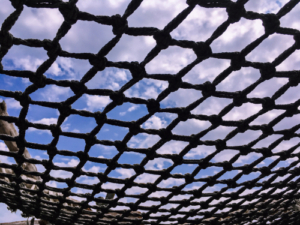Create a Cash Flow Safety Net for Your Business
 One of the lessons that we learned from March 2020 was that far too many businesses were running without a cash flow safety net. They had made financial calculations (and taken financial payouts) that implied that things would pretty much only ever stay the same or get better. But as we were brutally reminded, that’s not living in reality. What is living in reality is making sure your business has what it needs to survive big downturns that have nothing to do with you and your business.
One of the lessons that we learned from March 2020 was that far too many businesses were running without a cash flow safety net. They had made financial calculations (and taken financial payouts) that implied that things would pretty much only ever stay the same or get better. But as we were brutally reminded, that’s not living in reality. What is living in reality is making sure your business has what it needs to survive big downturns that have nothing to do with you and your business.
Credit and Insurance
Dig your well before you’re thirsty. Get a credit line with your bank and fill out all the paperwork they need so you have something to call on if you need. There’s no reason for a business that has been around at least a couple years and has clean financials to not have a line of credit with at least one bank.
You should also see if there are business interruption insurance policies that make sense for your business based on what you experienced during the pandemic.
Forecast
We’ve talked about the importance of red-teaming your business before. In this use case, you’d want to create the absolute worst-case scenarios for your business so you could figure out what you’d have to do in order to survive. Come up with dramatically bad numbers to find out just what kind of beating your business can take.
Not only is this a lot easier to do before a crisis, it also means you can create an “if this, then that” plan that corresponds to various levels of disaster.
Clean Books
Speaking of clean books, you can’t have a cash flow safety net for your business if you’re using it as a piggy bank for your personal life. One of the first things you want to do in a crisis is trim unnecessary or unneeded costs and it’s a lot simpler to do that before there’s a disaster.
Live Below Your Means
Living below your means isn’t just a good personal rule, it’s a solid business strategy as well. In their earliest days, inexperienced business owners often used “checkbook accounting” to measure the health of their business: money in the account is good, no money is bad.
Hopefully as the business grew, business owners tapped their accountants to find ways to not only optimize tax strategy, but also to make sure that there are options available should a sudden and unexpected drop in business occur.
Those options could be anything from the business having a reserve of cash to identifying assets that could be sold quickly if needed. There are lots of ways to find cash and savings when you’re not under pressure.
Have New Products and Services in Development
Now obviously, adding new revenue lines is a part of normal business operations, but we saw so many businesses pivot to related and unrelated offerings when their regular business was impeded during lockdowns.
If you are working on new products or services, there’s no reason to wait until a disaster to launch them, but if you have a few ideas at least roughly sketched out that you don’t have the resources to pursue or develop right now, it makes sense to have them in a file that you can go back to and keep adding to over time so that if there is a crisis and you need to manufacture some new revenue, you can look back at some ideas that made sense when there wasn’t a crisis.
Do you want us to take a look at your cash flow safety net and offer suggestions and advice? We’d love to hear from you.


